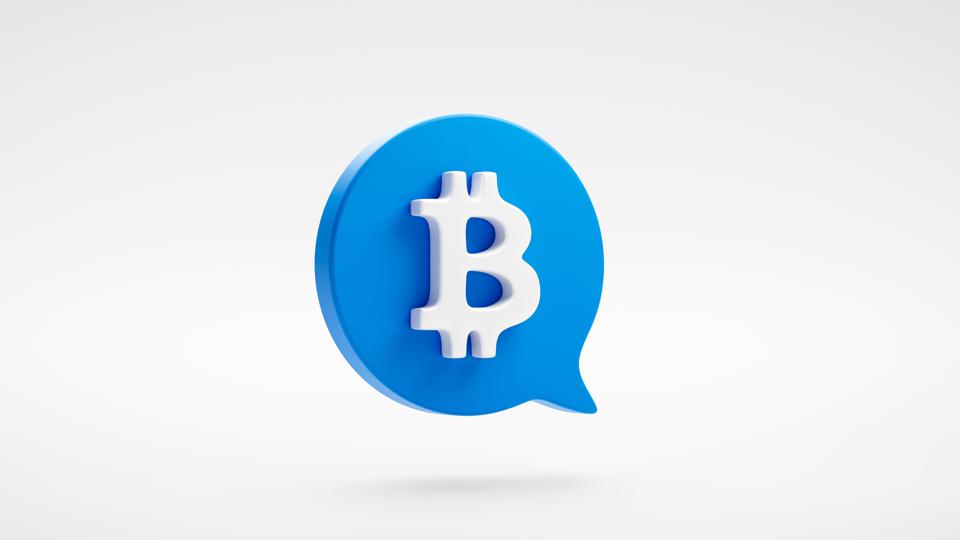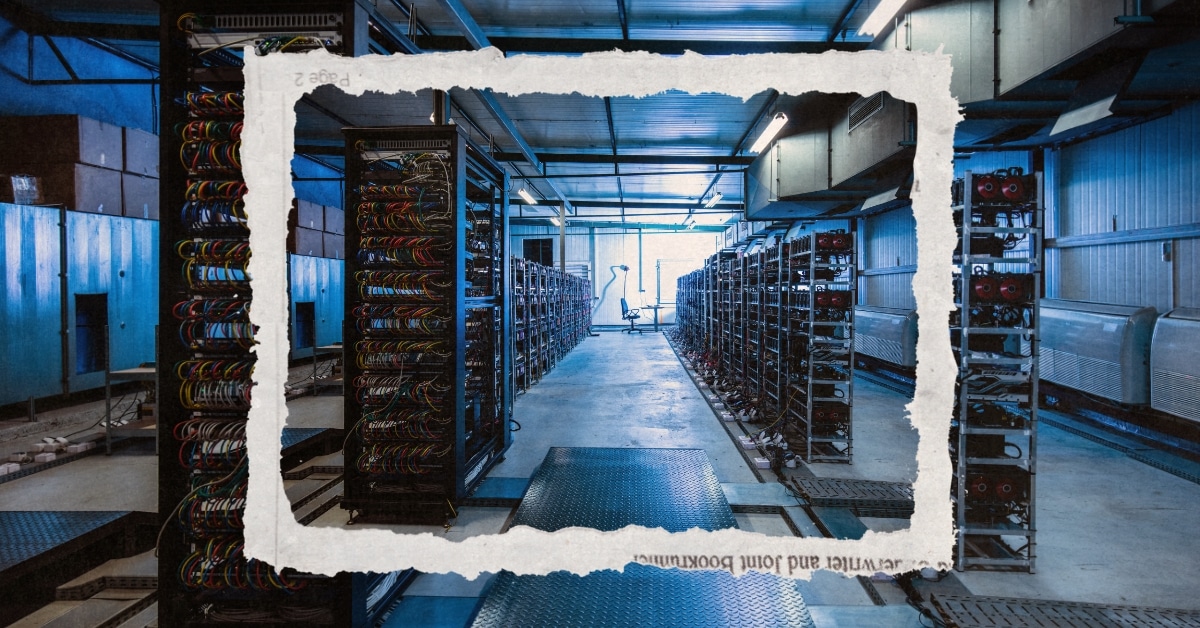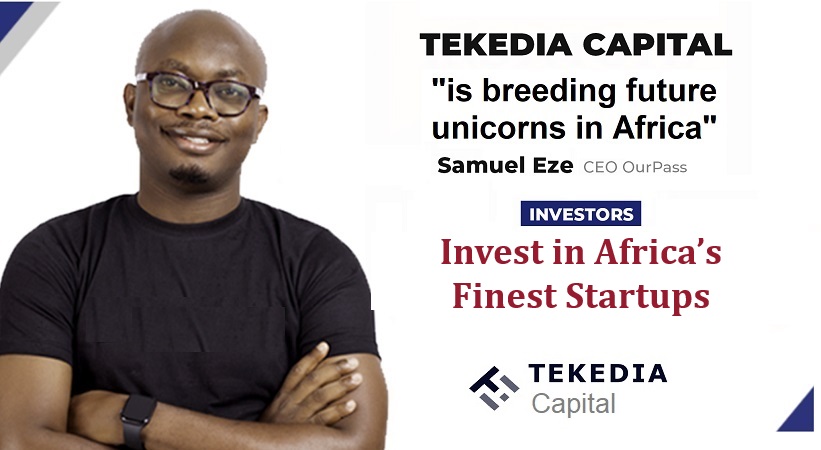News
Cryptocurrency Glossary – Forbes Advisor

Editorial Note: We earn a commission from partner links on Forbes Advisor. Commissions do not affect our editors’ opinions or evaluations.
From mainstream media to the most niche corners of the internet, crypto and the entire language of related terms that have sprung up alongside the investing phenomenon are everywhere.
No matter how much you know or don’t know about cryptocurrencies and the technology that underpins them, this jargon can make a challenging subject even harder to understand.
A B C D E F G H I J K L M N O P Q R S T V W X Y Z
Altcoin. Any cryptocurrency other than Bitcoin.
ASIC. An acronym that stands for an application-specific integrated circuit. An ASIC is a powerful and expensive computing device used for mining cryptocurrency. (See mining.)
Bitcoin (BTC). The original, largest and best-known cryptocurrency.
Buy the dip. An investing strategy involves buying an asset when its price has fallen to reap the benefits when its price rises again.
Blockchain. The underlying technology is used by nearly all cryptocurrencies. A blockchain is essentially a complete ledger of transactions held simultaneously by multiple nodes on a network.
Coin. A colloquial term for a cryptocurrency. (See altcoin and meme coin.)
Cold wallet. A physical storage device such as a flash drive, hard drive or “solid state” drive used to store cryptocurrency offline.
Cryptocurrency. A digital asset that can be used as a store of value or a medium of exchange for goods and services. Transactions are verified and recorded using cryptography by a distributed network of participants, rather than a centralized authority such as a bank or government agency.
Cryptography. A method of keeping information secret and secure by scrambling it into indecipherable codes. The information can only be decrypted and read with the necessary key.
dApp. Short for decentralized application, a dApp is an app that isn’t controlled by a central authority. Twitter is an example of a centralized app, with users relying on it as an intermediary to send and receive messages. A dApp is distributed on a blockchain, allowing users to send and receive data directly without an intermediary.
DeFi. Short for decentralized finance. Finance is traditionally centralized because it relies on trusted intermediaries. For example, if you want to send money to a friend or relative, you rely on your bank to send it to the recipient’s bank. DeFi, on the other hand, requires no intermediaries. Participants can send and receive assets directly. In theory, this makes transactions faster and cheaper.
DAO. An acronym that stands for a decentralized autonomous organization. A DAO is a group of people who work together toward a shared goal and abide by rules written into the project’s self-executing computer code. Bitcoin (the project, not the currency) is the earliest example of a DAO.
Distributed ledger. In traditional finance, an organization such as a bank holds a ledger of all its customers’ transactions. Distributed ledges use nodes, or independent computers, to record, share, synchronize transactions on the electronic ledger. A blockchain is a type of distributed ledger.
Double spend. If you spend $5 in cash to pay for a sandwich, you no longer own the $5 and cannot spend it a second time. Even with digital transactions, centralized authorities, such as banks, only permit people to spend their money one time. With decentralized financial tokens like cryptocurrencies, a single coin could be copied 100 times and spent 100 times. Blockchain helps solve and prevent this double-spend problem.
Featured Cryptocurrency Partner Offers
Limited Time Offer
Join eToro and get $10 of free Crypto! (US Only)
Cryptocurrencies Available for Trade
20+
Fees (Maker/Taker)
0.95%/1.25%
Cryptocurrencies Available for Trade
250+
On Uphold’s Website
Terms Apply. Cryptoassets are highly volatile. Your capital is at risk.
Exchange. A website or app that allows users to buy and sell crypto assets.
Ether (ETH). The native cryptocurrency token of the Ethereum platform
Ethereum. The second-biggest cryptocurrency by market capitalization after Bitcoin.
Encryption. The process of making digital information into a form that prevents unauthorized access. If you use a password to access a website, the site should be encrypting it so that it is of no use to hackers if stolen.
Fiat currency. Traditional currencies are backed by the full faith and credit of a nation state. The U.S. dollar, the euro or the British pound are fiat currencies.
Fork. The process by which the community that runs an individual cryptocurrency makes a change to the blockchain’s governing protocols. The change marks a major departure—a fork, if you will—from the previous iteration of the blockchain. Soft forks typically involve a change in the software protocol, but one that is backwards-compatible. Hard forks are significant enough to require all nodes to upgrade to the latest version.
Gas. Transactions on the Ethereum network carry a fee. For every transaction, users must pay an amount of the native Ethereum currency, Ether (ETH). This fee is referred to as gas. Gas is used to reward Ethereum validators for the energy they use clearing transactions. Gas also serves as a deterrent against malicious use of the blockchain.
Graphics card. Verifying transactions on a blockchain via proof of work involves solving cryptographic puzzles. Solving these puzzles may require significant computing power, which in turn may consume substantial amounts of power. High-end graphics cards used in PC gaming have the processing power needed to validate transactions.
Hash. A hash is the result of a piece of data being put through a special hashing algorithm. It compresses data into a nearly unique alphanumeric string of text. This is important in cryptocurrency because a blockchain is an immutable record of transactions, and hashing can uncover attempts to illegitimately alter or change data.
Hot wallet. A form of online storage for cryptocurrencies, provided either by an exchange or a third party. Since storage is online and accessed with passwords, hot wallets are typically a target for hackers. However, hot wallet operators can help users regain access to their assets if they lose their access codes.
ICO. An acronym that stands for initial coin offering. An ICO is the cryptocurrency equivalent of an initial public offering (IPO). It offers investors the opportunity to back a new crypto project.
Jager. The smallest denomination of Binance Coin (BNB).
Know Your Customer (KYC). Although not required, many crypto exchanges carry out certain identity checks on their customers under KYC rules.
Ledger. A record of transactions maintained by both centralized financial institutions and decentralized finance applications. Data for each transaction entered into a ledger may include times, dates, senders and recipients.
Market capitalization. Also written as market cap, this is the total market value of a cryptocurrency. At the time of writing, all cryptocurrencies had a combined market cap of slightly less than $1 trillion.
Mining. Crypto mining is the process of verifying transactions via a proof of work consensus mechanism. Mining involves using computer hardware to solve a hash with trillions of possible combinations. The more computing power you have, the more guesses you can make within each given window of time, and the greater your chances of earning newly minted crypto.
Meme coin. An altcoin based on a meme, a kind of inside joke in the form of an image repeatedly altered and shared online. Dogecoin is an example of a meme coin.
Node. A computer or device connected to other computers or devices that all hold a copy of a blockchain. Each node supports the broader network by sharing information and validating transactions.
NFT. An acronym that stands for a non-fungible token, a digital collectible that uses the same underlying technology as cryptocurrencies.
On-chain. A transaction that occurs on a blockchain, reflected on the distributed, public ledger.
On-ledger currency. A cryptocurrency that is minted by and used on a blockchain ledger, such as Bitcoin.
Orphan block. A block that has been solved but not accepted by the network and isn’t added to the blockchain. Sometimes these blocks are referred to as “stale blocks.”
Featured Cryptocurrency Partner Offers
Limited Time Offer
Join eToro and get $10 of free Crypto! (US Only)
Cryptocurrencies Available for Trade
20+
Fees (Maker/Taker)
0.95%/1.25%
Cryptocurrencies Available for Trade
250+
On Uphold’s Website
Terms Apply. Cryptoassets are highly volatile. Your capital is at risk.
P2P. Short for peer-to-peer. Refers to a transaction between two people without an intermediary or central authority involved.
Private key. Also known as a secret key, this is essentially the encrypted password to someone’s crypto holdings. It’s an impossibly long number that’s practically impossible to guess. You authorize a transaction by signing it with your private key. Private keys can be used to access and manage your crypto assets.
Public key. The public-facing address of your crypto wallet. To receive funds into your account, you have to share your public key. Each public key pairs with a private key, and the private key is only known, in theory, to that user.
Proof of work. Commonly written as PoW, this is a consensus mechanism employed by many blockchains to prove that miners have done the computational work to guess the 64-character hash necessary to add a block to the blockchain. Broadcasting the solution allows other nodes to quickly verify that your hash is correct and that you have carried out the work required to get it.
Proof of stake. Commonly written as PoS, this is a consensus mechanism employed by some blockchains that requires verifiers to lock up, or stake, a certain amount of cryptocurrency to earn a chance to add new blocks to a blockchain. The more coins you stake, the better your chances of becoming a validator. Should you spend your way into the position to deliberately approve a fraudulent transaction, you risk losing your stake, providing a strong disincentive to cheat.
Quantum computing. A computer science field that uses principles of quantum physics to process much larger data sets at much greater speeds than traditional computing methods.
Regulated. A market in which players must follow certain rules of risk fines and/or the loss of their operating licenses.
Satoshi Nakamoto. – The pseudonym for whoever penned the original Bitcoin whitepaper.
Satoshi. The smallest unit in Bitcoin (BTC). For example, 1 satoshi is equivalent to 0.00000001 BTC, a fraction of a penny.
Smart contract. A program that executes itself on a blockchain when certain conditions are met, without the need for human intervention or an intermediary. Once completed, the contract cannot be changed or undone.
SHA-256. A hashing algorithm that compresses data into an alphanumeric string that cannot be reverse engineered, keeping the original data secret and secure while being useful for validating input data. It was partly developed by the U.S. National Security Agency (NSA), and is used by Bitcoin.
Seed. A random series of 12 to 24 words generated by your crypto wallet and used to gain access to it.
Stablecoin. A cryptocurrency that aims to maintain a fixed, unchanging market value that is pegged to another currency, commodity or financial instrument. As of this writing, the biggest stablecoins are Tether and USD Coin.
Tether (USDC). A stablecoin that is pegged 1-to-1 with the U.S. dollar.
Terahash. The rate at which a computer or network can guess one trillion hashes per second when mining for cryptocurrency.
Token. An individual cryptocurrency. Specifically, it’s a way to refer to a crypto that runs on a particular blockchain. For example, XRP is a token on the Ripple blockchain.
USD Coin (USDC). A stablecoin that is pegged 1-to-1 with the U.S. dollar.
Volume. The total amount of currency being traded in the open market at any given moment. In cryptocurrency markets, volume is typically referenced to in a 24-hour period.
Validator. Someone who pays for the chance to validate transactions and earn crypto on a proof of stake blockchain.
Volatility. A market condition in which prices frequently and unpredictably rise and fall.
Wallet. A digital storage device or location for keeping crypto assets secure. Wallets can be online (see hot wallet) or offline (see cold wallet).
Wei. The smallest denomination of ether. For instance, 1 ETH is the equivalent of 1,000,000,000,000,000,000 wei.
Whitepaper. A technical document released alongside new crypto projects that explains how the system works.
XRP. A cryptocurrency token that runs on the Ripple blockchain.
Yield. A return on investment, expressed as a percentage.
Zero confirmation. A transaction that has yet to be confirmed on the blockchain, and therefore, isn’t part of the the blockchain yet.
News
US Cryptocurrency Rules Delayed by ‘Never-Ending’ Lawsuits

Ripple CEO says cryptocurrency industry still seeking regulatory clarity from US
Speaking to Bloomberg News on Wednesday (July 17), Author: Brad Garlinghouse he said America is behind behind other countries which have already adopted cryptocurrency regulations.
“What we’re seeing, where it’s the UK, Japan, Singapore… even the European Union, more than two dozen countries have come together to provide a framework for cryptocurrency regulation,” Garlinghouse said.
“It’s frustrating that we as a country can’t get that regulatory framework in place. And instead, we have this never-ending lawsuit coming from the SEC that doesn’t really address the problem.”
Ripple has been the target of some of these legal disputes. Securities and Exchange Commission (SEC) sued the company in 2020, accusing it of conducting a $1.3 billion operation offering of unregistered securities tied to its XRP token.
However, last year a judge ruled that only Ripple’s institutional sales of XRP, not retail sales, violated the law, a decision widely seen as a victory for the cryptocurrency industry.
As PYMNTS noted at the time, that ruling has “far-reaching repercussions impact across the digital asset ecosystem, which has long maintained that its tokens do not represent securities contracts.”
However, Garlinghouse told Bloomberg on Wednesday that the company cannot wage multimillion-dollar legal battles over each token.
He spoke to the news agency from the Republican National Convention in Milwaukee, where the party is backing the candidacies of former President Donald Trump and Ohio Sen. J.D. Vance, both of whom are considered pro-cryptocurrency.
But Garlinghouse argued that cryptocurrencies “should not be a partisan issue,” and noted that he had recently attended a conference in Washington that included Democrats, including White House officials.
“I think they were there, listening to the industry… it was refreshing to start having that conversation,” she said.
President Joe Biden earlier this year he vetoed a measure which would have ended the SEC’s special rules for crypto-asset custodians. This legislation was supported by both the digital asset industry and the banking industry.
Ripple early this year donated $25 million to the cryptocurrency industry’s super PAC Fair Smoothiewith Garlinghouse stating at the time that such donations would continue every year, as long as the industry had its detractors.
Second Open SecretsWhich monitor spending For campaigns, the PAC has spent $13.4 million this year, much of it to help defeat Rep. Katie Porter’s (D-Calif.) U.S. Senate campaign.
News
The Future of Cybersecurity in the Cryptocurrency Industry

The cryptocurrency space has had a tumultuous journey, with its fair share of ups and downs. As we look to the future, one area that remains a constant focus is cybersecurity. The digital nature of cryptocurrencies makes them inherently vulnerable to cyber threats, and as the industry evolves, so does the landscape of potential risks.
In 2022, the cryptocurrency market faced significant challenges, with over $2 trillion in market value lost. This event served as a wake-up call for the industry, highlighting the need for robust cybersecurity measures. The future of cryptocurrency security is expected to see a shift towards more regulated and established institutions taking the reins of crypto technology and blockchain infrastructure.
The decentralized nature of cryptocurrencies offers numerous benefits, such as transparency and financial inclusion. However, it also introduces unique security challenges. The risk landscape is filled with threats such as hacking, phishing, ransomware attacks, malware, and social engineering. These threats not only lead to financial losses, but also damage the reputation and trust within the cryptocurrency ecosystem.
Mini-MBA Tekedia edition 15 ((September 9 – December 7, 2024) started recordings; Register today for discounts reserved for early bird customers.
Tekedia AI in Business Masterclass Opens registrations Here.
Join the Tekedia Capital Syndicate and IInvest in Africa’s best startups Here.
The decentralized nature of cryptocurrencies offers many benefits, but it also presents unique security challenges. Cyber risks such as hacking, phishing, and ransomware pose threats to the integrity of digital assets. The infrastructure that supports cryptocurrencies is not immune to vulnerabilities, including smart contract flaws and exchange hacks.
To address these vulnerabilities, the infrastructure that supports cryptocurrencies must be strengthened. Smart contract vulnerabilities, exchange hacks, wallet breaches, and flaws in the underlying blockchain technology are significant concerns that must be addressed to ensure the security and integrity of digital assets.
As cybercriminal tactics and techniques become more sophisticated, the cryptocurrency industry must stay ahead of the curve. The future will likely see more targeted attacks, exploiting weaknesses in infrastructure, networks, and human factors. This requires a proactive and multifaceted approach to cybersecurity.
To mitigate these risks, several measures must be adopted:
Strengthening security measures: Developers, exchanges, and wallet providers must improve security protocols, use strong encryption, implement multi-factor authentication, and conduct regular security audits.
Education and awareness: Users should be educated on best practices for protecting their digital assets, including using strong passwords, recognizing phishing attempts, and using hardware wallets for secure storage.
Looking ahead, the cryptocurrency industry is expected to see an increased focus on robust security measures. Blockchain projects and exchanges are likely to invest in advanced encryption techniques and decentralized storage solutions to protect user assets. The future impact of cyber risk on cryptocurrencies will depend on the collective efforts of stakeholders to address vulnerabilities and strengthen security measures.
Collective efforts by stakeholders in the cryptocurrency space are crucial to address vulnerabilities and strengthen security measures. While challenges persist, advances in cybersecurity technologies and practices offer hope for a more secure and resilient cryptocurrency ecosystem.
The future of cybersecurity in the cryptocurrency industry depends on finding a balance between innovation and regulation. It requires a collaborative effort from all parties involved, from developers to end users, to create a secure environment that fosters trust and growth in the industry. As we move forward, it is critical that lessons learned from past events guide the development of stronger security measures, ensuring the longevity and stability of cryptocurrencies as a vital part of the modern economic toolkit.
Like this:
Like Loading…
News
Bullish XRP and RLBK price predictions rise, outpacing the broader cryptocurrency market, prompting Shiba Inu holders to switch!

Bitcoin’s one-week surge from $60,000 has pushed other cryptocurrencies into an uptrend. However, for many altcoins, this trend has been temporary. Altcoins such as XRP and Shiba Inu (SHIB) have experienced price drops. However, Rollblock, a new altcoin on the Ethereum blockchain, has thrived during this period, attracting thousands of investors looking for long-term growth.
XRP’s Nearly 30% Growth Over Last Week Drops as Selling Pressure Increases
XRP is seeing further price decline as Ripple investors withdraw their profits from the token. The surge in XRP’s price to $0.64 in the past week has provided investors with a perfect opportunity to increase their returns in the short term. With the ongoing sell-off in XRP, XRP has jumped over 8% in the past day and is now trading at $0.59. However, analysts tracking XRP indicators predict that XRP could still extend its gains by over 30% in the coming weeks.
Shiba Inu (SHIB) marks its third consecutive day of losses
Shiba Inu (SHIB) is in a period of adjustment after a week of strong gains. In the last 24 hours, SHIB has seen a jump of over 7%, reflecting a natural market fluctuation. Analysts are observing a death cross on the Shiba Inu chart, which historically signals the potential for future opportunities as the market stabilizes. As investors explore new possibilities, some are diversifying into promising altcoins like Rollblock (RBLK) to strategically rebalance their portfolios and capitalize on the emerging trend.
Rollblock (RBLK) Up Another 7% as New Investors Join Pre-Sale
Rollblock (RBLK) has taken the cryptocurrency market by storm, having attracted investors from more popular altcoins like Shiba Inu (SHIB) and XRP. Rollblock’s growth is attributed to its utility in the $450 billion global gaming industry.
Rollblock aims to use blockchain technology to bridge the gap between centralized and decentralized gambling. With blockchain technology, Rollblock secures every transaction in its online casino, providing transparency and convenience to millions of players who are uncomfortable placing bets on other iGaming platforms.
This innovative use of blockchain technology in the industry has grown Rollblock to over 4,000 new users in less than two months. With plans to add sports betting, this number is expected to grow exponentially in Q3.
Rollblock uses a revenue sharing model that splits up to 30% of its casino’s weekly profits with token holders. This happens after Rollblock buys back $RBLK from the open market and uses half of it for rewards. The other half is burned to increase the price of $RBLK.
Rollblock price has seen four increases in the past month with $RBLK tokens now selling for $0.017. Analysts predict that at the current growth rate, Rollblock could increase by over 800% before the presale ends. For investors looking for a long-term token with growth potential, phase four is the best time to buy Rollblock before its price skyrockets!
Discover the exciting Rollblock (RBLK) pre-sale opportunities now!
Website:https://Rollblockpresale.io/
Social: https://linktr.ee/Rollblockcasino
No spam, no lies, just insights. You can unsubscribe at any time.
News
Texas Crypto Miners Turn to AI as Crypto Declines

As cryptocurrency mining becomes less profitable, Texas cryptocurrency mining companies are switching to supporting artificial intelligence companies.
Bitcoin miners, with their sprawling data centers and access to significant energy resources, are ideally suited for computationally intensive AI operations, and as cryptocurrency mining becomes less profitable, companies see this shift as a logical answer to their problems.
On Thursday, Houston-based Lancium and Denver-based Crusoe Energy Systems announced a multibillion-dollar deal to build a 200-megawatt data center near the West Texas city of Abilene to support advanced artificial intelligence applications such as medical research and aircraft design, CNBC reported. The plant represents the first phase of a larger 1.2 gigawatt project.
Lancium and Crusoe’s move into AI mirrors a broader trend among bitcoin miners. The combined market capitalization of the top U.S.-listed bitcoin miners hit a record $22.8 billion in June. Companies like Bit Digital and Hut 8 are diversifying into AI, with Bit Digital securing a $92 million annual revenue deal to supply Nvidia GPUs and Hut 8 raising $150 million to expand its AI data center.
But the growing popularity of these operations also presents challenges, particularly for the Texas power grid. Last month, the Electric Reliability Council of Texas announced that the state is expected to nearly double its energy production by 2030 to meet the high energy demands of data centers and cryptocurrency operations.
Lieutenant Governor Dan Patrick expressed concern about the projections.
“Cryptocurrency miners and data centers will account for more than 50% of the additional growth. We need to take a close look at these two sectors,” He wrote on Twitter/X. “They produce very few jobs compared to the incredible demands they place on our network. Cryptocurrency miners could actually make more money selling electricity to the network than they do from their cryptocurrency mining operations.”
Analysts predict significant growth in data center power capacity, which is expected to account for up to 9% of U.S. electricity consumption by 2030.
The operations also pose challenges for nearby cities. Earlier this month, TIME reported that a crypto-mining facility was seriously compromising the health of residents in the city of Granbury. TIME reported more than 40 people with serious health problems, including cardiovascular disease, high blood pressure and hearing loss. At least 10 of the residents needed to go to the emergency room or an urgent care facility.
The disturbances were caused by the extreme noise generated by the crypto-mining facility’s fans, which are used to keep the machines cool. While the proposed data center in Abilene would use liquid cooling systems, it’s still unclear whether the facility’s operations would pose a health risk to local residents.
-

 Nfts1 year ago
Nfts1 year agoShardLab Launches ZK-Based Tool for Digital Identity and NFT Vouchers
-

 News1 year ago
News1 year agoWallet recovery firms are abuzz as stranded cryptocurrency investors panic in the bitcoin boom
-

 Bitcoin1 year ago
Bitcoin1 year agoBitcoin, Ethereum, Solana and Cryptocurrency Markets Look Ready to ‘Send’ as Stars Align, According to Investor Chris Burniske
-

 Altcoins1 year ago
Altcoins1 year agoThree Altcoins Poised for Significant Growth in 2024: ETFS, OP, BLAST
-

 Altcoins1 year ago
Altcoins1 year agoAccumulate these altcoins now for maximum gains
-

 Nfts1 year ago
Nfts1 year agoOG Crypto Artist Trevor Jones Unveils Groundbreaking Collection of Ordinals | NFT CULTURE | NFT News | Web3 Culture
-

 Bitcoin1 year ago
Bitcoin1 year agoBillionaires are selling Nvidia stock and buying an index fund that could rise as much as 5,655%, according to some Wall Street analysts
-

 Videos9 months ago
Videos9 months agoKamala just won the boner! [Bad For Crypto]
-

 Videos1 year ago
Videos1 year agoLIVE FOMC 🚨 Could be CATASTROPHIC for Altcoins!
-

 News1 year ago
News1 year agoA Guide for Newcomers & Beginners – Forbes Advisor
-

 Videos1 year ago
Videos1 year agoAttention: a historically significant BITCOIN signal has just appeared!
-

 Videos1 year ago
Videos1 year agoSTOCK MARKET FUD! ⚠️ [Why This Is GREAT For Bitcoin Traders!]









